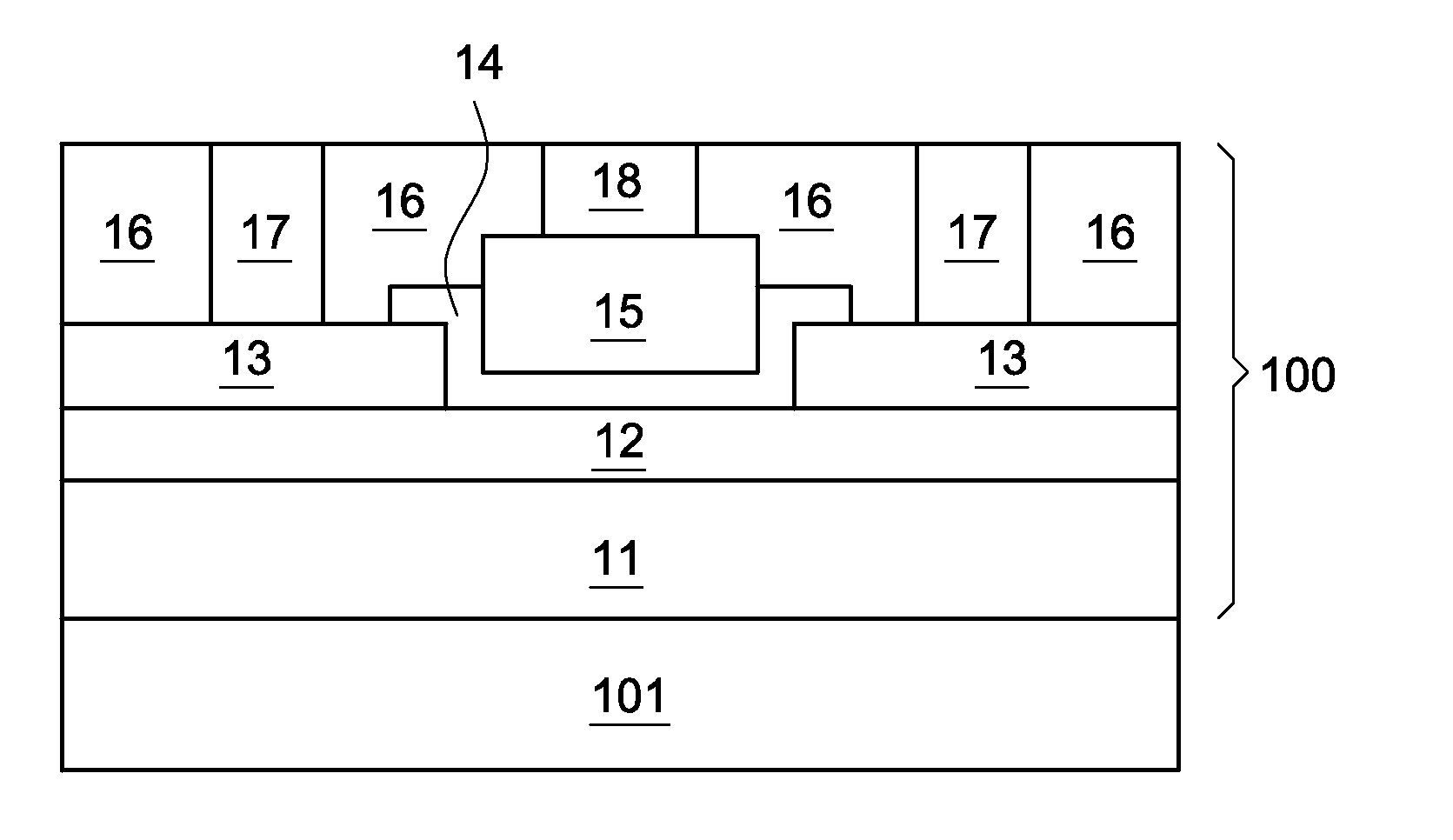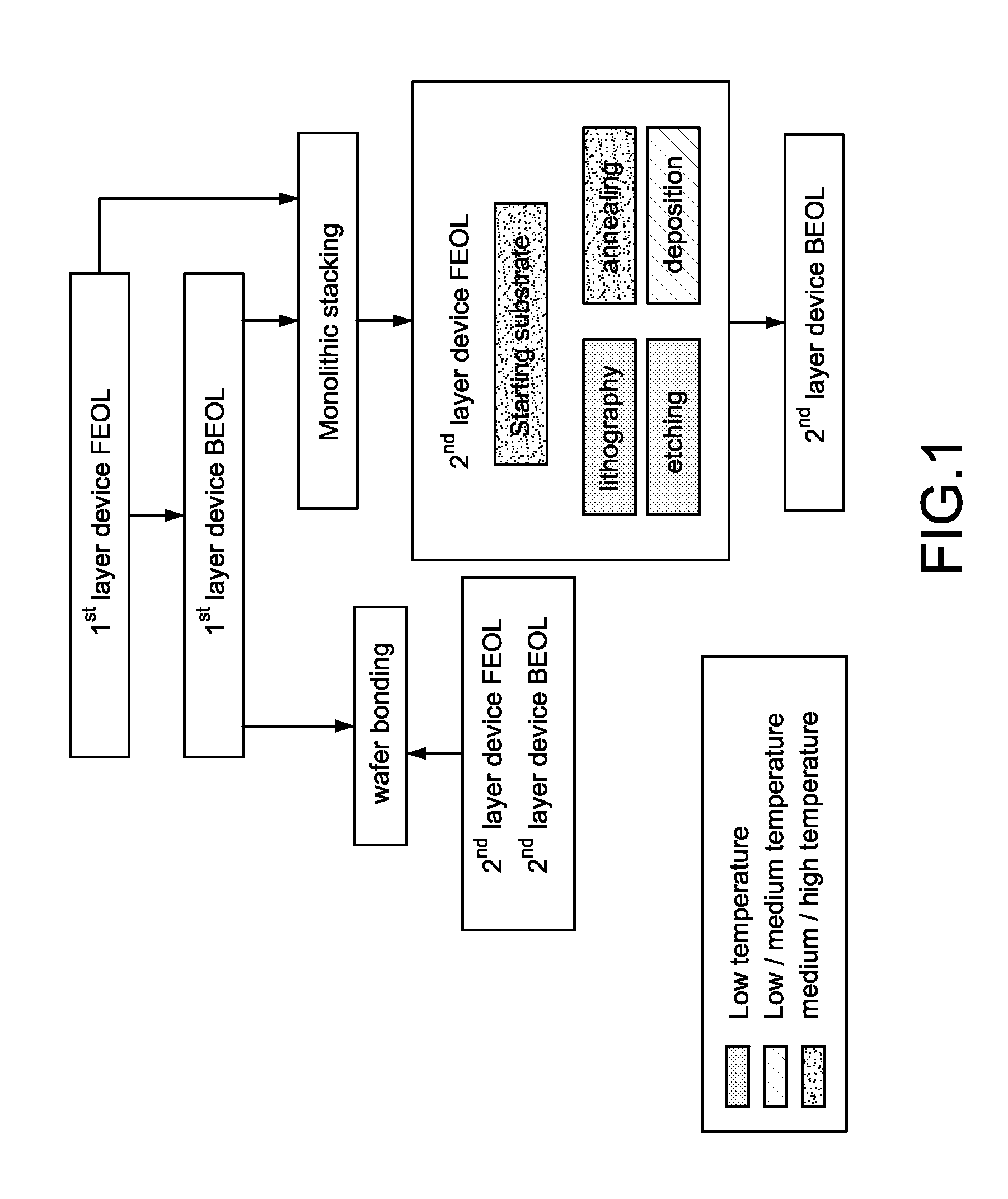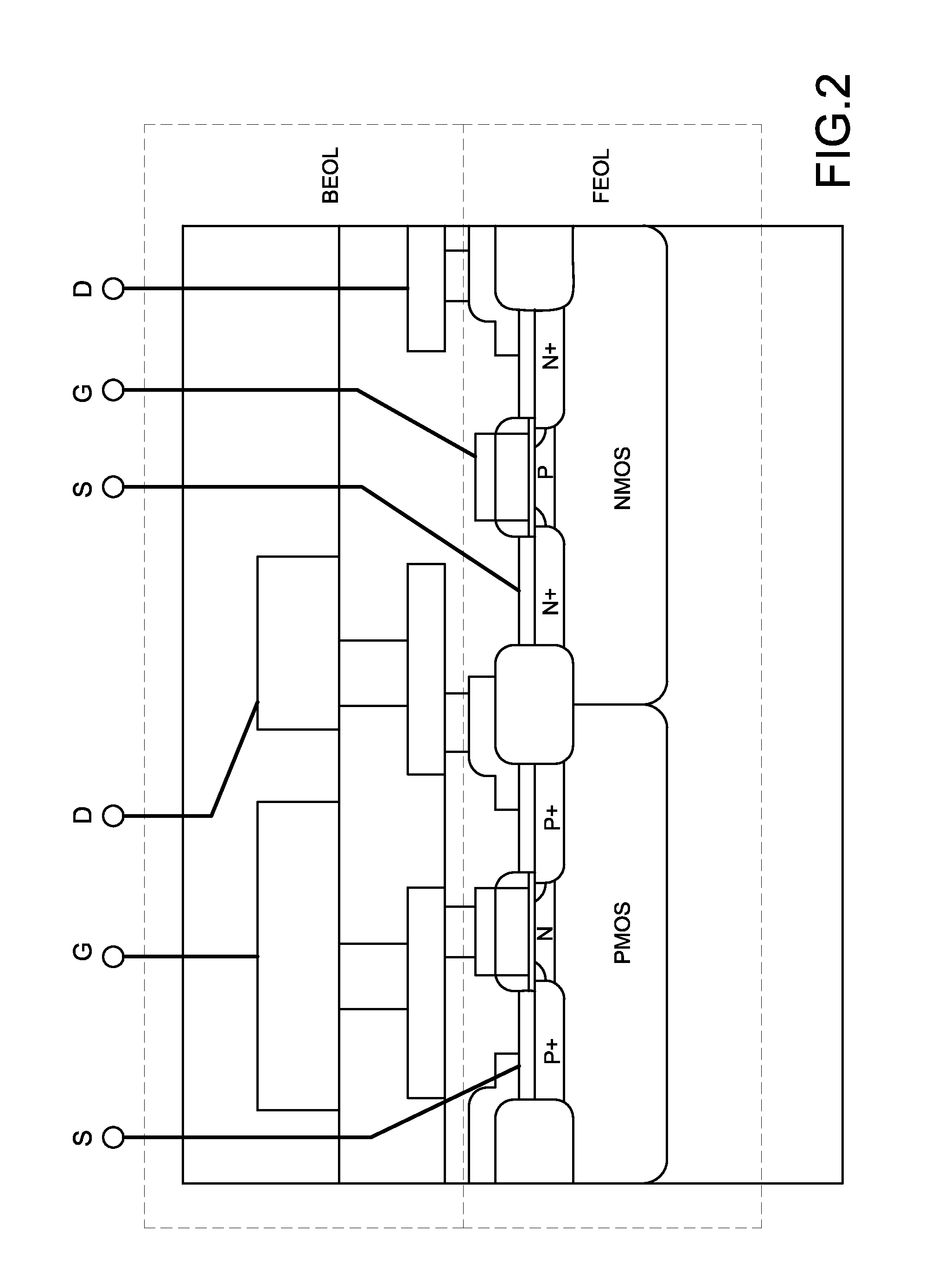Electrical switch using gated resistor structures and three-dimensional integrated circuits using the same
a gated resistor and integrated circuit technology, applied in the direction of semiconductor devices, electrical apparatus, transistors, etc., can solve the problems of significant processing modifications, limited tsv dimensions, and significant limitations on the feasibility of monolithic stacking, and achieve low thermal budget and high interconnect density.
- Summary
- Abstract
- Description
- Claims
- Application Information
AI Technical Summary
Benefits of technology
Problems solved by technology
Method used
Image
Examples
Embodiment Construction
[0042]BSMC Methodology
[0043]To resolve the issues arising from TSV / wafer bonding and monolithic stacking, a “bonding substrate / monolithic contact” (BSMC) methodology for multiple layer device fabrication is proposed and illustrated in FIG. 3. The general concept is that since substrate annealing and channel activation do not require accurate alignment to the previous layer, they should be done before bonding to avoid unnecessary thermal impact to the acceptor wafer. By doing so we essentially eliminate one of the two thermal bottlenecks mentioned above, leaving only the S / D dopant annealing. For example, we could start with a regular Si substrate, implant and activated, then transferred to an acceptor wafer using oxide to oxide bonding. The bonding process requires little effort on the alignment since at this moment, the layers (implanted and activated) being transferred do not have any fine pitch patterns defined. After the transfer, similar process flow sequence for fabricating a ...
PUM
 Login to View More
Login to View More Abstract
Description
Claims
Application Information
 Login to View More
Login to View More - R&D
- Intellectual Property
- Life Sciences
- Materials
- Tech Scout
- Unparalleled Data Quality
- Higher Quality Content
- 60% Fewer Hallucinations
Browse by: Latest US Patents, China's latest patents, Technical Efficacy Thesaurus, Application Domain, Technology Topic, Popular Technical Reports.
© 2025 PatSnap. All rights reserved.Legal|Privacy policy|Modern Slavery Act Transparency Statement|Sitemap|About US| Contact US: help@patsnap.com



